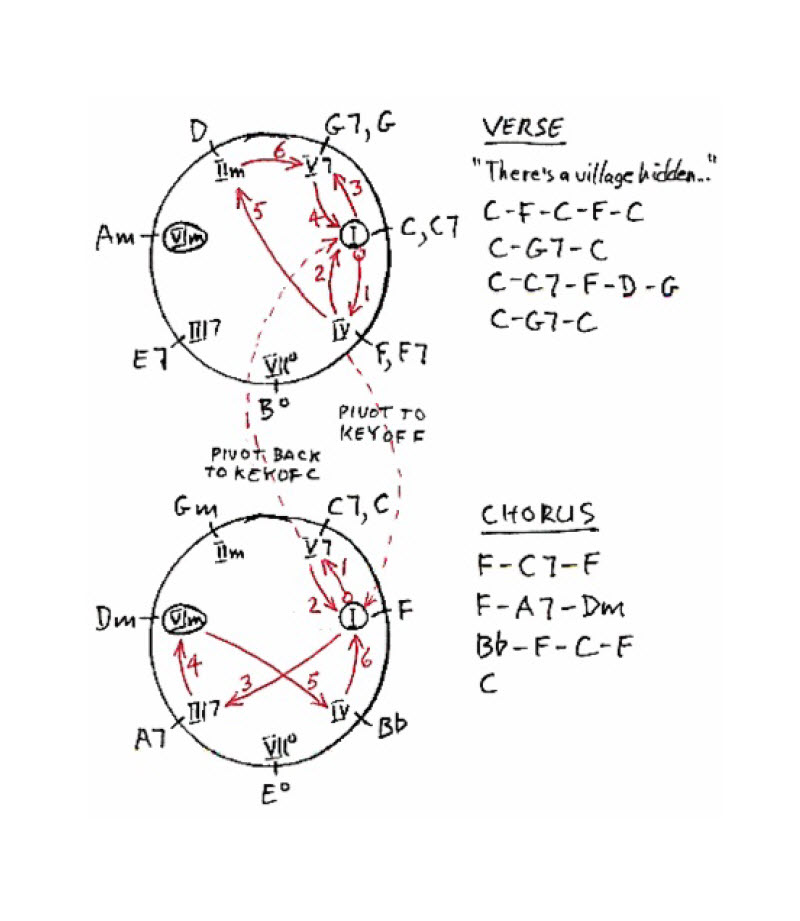You Are Reading the First 6 FREE Chapters (470 pages)
6.13.3 “The Three Bells (The Jimmy Brown Song)”: The Chords, and How the Progression Works
Related keys are keys that have many scale notes and chords in common. As mentioned earlier, you can run into trouble modulating to a closely related key if you don’t know what you’re doing. Your audience could start to wonder what key you’re in.
This French language beauty, “The Three Bells” (originally "Les Trois Cloches," a Swiss song written in French), makes it all sound so natural.
In this example, two of the chords that the keys of C major and F major have in common are their namesake chords, C major and F major. Beginning in the key of C major, this song uses the chord F major to pivot to the key of F, and the chord C to pivot back to the key of C (Figure 106 below).

FIGURE 106: Chord Map of “The Three Bells (The Jimmy Brown Song)” (Original French Words by Bert Reisfeld, English Words by Dick Manning, Music by Jean Villard, 1945)
For the sake of maintaining tonality, the progression makes emphatic use of the dominant 7th chord in each key.
There’s another reason this song so smoothly shifts tonality between the keys of C and F. There is a pronounced tempo change between the verse and the chorus. This sharp delineation makes it even easier for the ear to accept that the verse and chorus inhabit separate tonal worlds.

